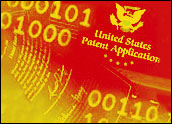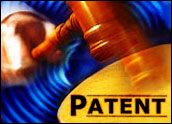
As technology has advanced, the federal courts have routinely been tasked with interpreting what types of inventions are eligible for patent protection under the Patent Act. For example, in 1980, the Supreme Court ruled that human-made microorganisms were eligible for patent protection.
As the Information Age blossomed in the 1990s, the federal courts had to determine whether to extend patent protection to computer-implemented processes for manipulating information. Specifically, questions arose as to whether methods of doing business were patentable.
Method or Idea?
In 1998, the Court of Appeals for the Federal Circuit, which has exclusive appellate jurisdiction for patent matters, answered the question in the affirmative. Its opinion in State Street Bank & Trust Co. v. Signature Financial Group held methods of doing business and manipulating data were patentable if the method “produce[d] a useful, concrete and tangible result.”
After the State Street decision, the United States Patent and Trademark Office (USPTO) saw a dramatic increase in the number of patent applications filed to cover business methods. In response, the USPTO transitioned the group reviewing these applications to “become more business function focused.” In the decade following State Street, the federal courts, the USPTO, and innovators each struggled with applying the State Street patent eligibility test to the unique properties of this subject matter.
The Federal Circuit recently revisited the patentability of business methods. Unlike the majority of opinions issued from the court, including State Street, the recent decision In re Bilski was decided by all 12 judges of the court, rather than the usual panel consisting of three judges. In re Bilski affirmed that methods of doing business are subject to patent protection. The court, however, replaced the State Street test for determining patent eligibility of process innovations.
The patent-at-issue in In re Bilski is directed toward methods of managing risk in commodity trading. The USPTO rejected the application on the basis that it was not directed toward a patent-eligible method. In particular, the USPTO found that the methods did “not involve any patent-eligible transformation” and were merely directed toward an abstract idea. The issue was then appealed to the Federal Circuit.
Sufficient Transformation
Looking to Supreme Court decisions from the 1970s for guidance, the court held that a claimed process is patent-eligible if the process satisfies a “machine or transformation” test. In particular, a process is patent-eligible if the process (1) is tied to a particular machine or apparatus, or (2) transforms a particular article into a different state or thing.
Specifically looking to earlier technologies, the opinion indicates that a method “operated on a computerized rubber curing apparatus” would be sufficiently tied to a particular machine to be patentable subject matter, whereas “a formula to calculate an ‘alarm limit'” would not. Likewise, a process that “transformed raw, uncured rubber into molded, cured rubber products” transforms a particular article into a different state or thing, whereas creating an alarm limit in a chemical reaction was not “limited to any particular chemical (or other) transformation.”
The court also reviewed past decisions from a predecessor appellate court that directly dealt with electronic-only transformations of data. Specifically, the court held that electronic-only transformations of data would be patentable where visual depictions of specific physical objects were claimed. Merely collecting data, however, would not be considered a sufficient transformation.
Moreover, the court indicated that “[p]urported transformations or manipulations simply of public or private legal obligations or relationships, business risks, or other such abstractions cannot meet the test, because they are not physical objects or substances, and they are not representative of physical objects or substances.”
The holding reaffirms the importance of thoroughly evaluating novel business practices and ensuring that patent applications are drafted to emphasize novel machines and physical transformations. Patent counsel should also be creative when drafting patent applications to provide maximum flexibility in the event that the law is further modified.
Indeed, along with the majority’s opinion, three separate dissenting opinions and one concurring opinion joined the decision. Therefore, the Supreme Court may again have to weigh in on what inventions are subject to patent protection.
Charles Miller is a principal shareholder in the Chicago office ofBanner & Witcoff, a law firm dedicated to the protection and enforcement of intellectual property rights. Shawn Gormanis an associate in the Chicago office of Banner & Witcoff. The information in this article does not constitute legal advice, and is intended for informational purposes only. No attorney-client privilege exists or is otherwise created with anyone by virtue of this article. Each situation is different. Always contact an attorney to discuss the specifics of your case.



































Social Media
See all Social Media